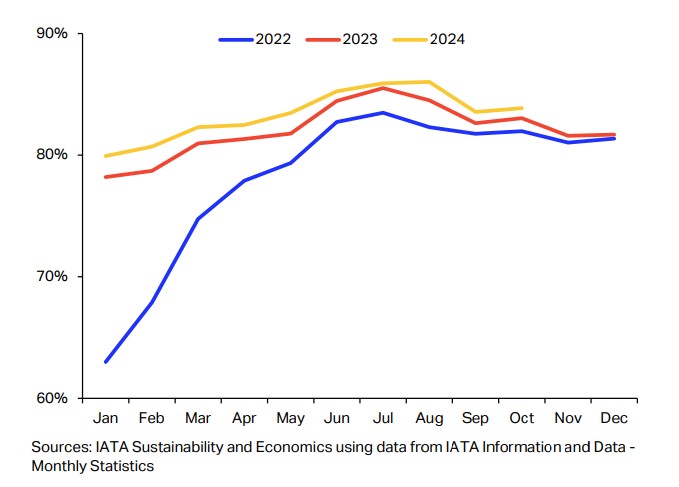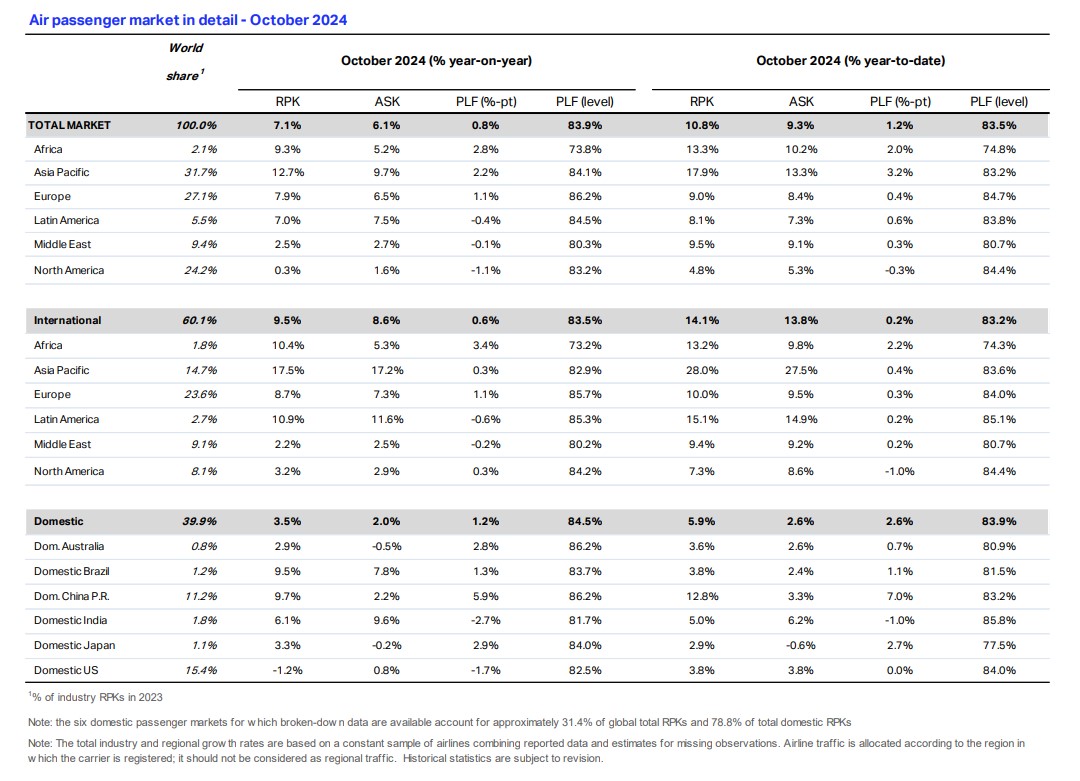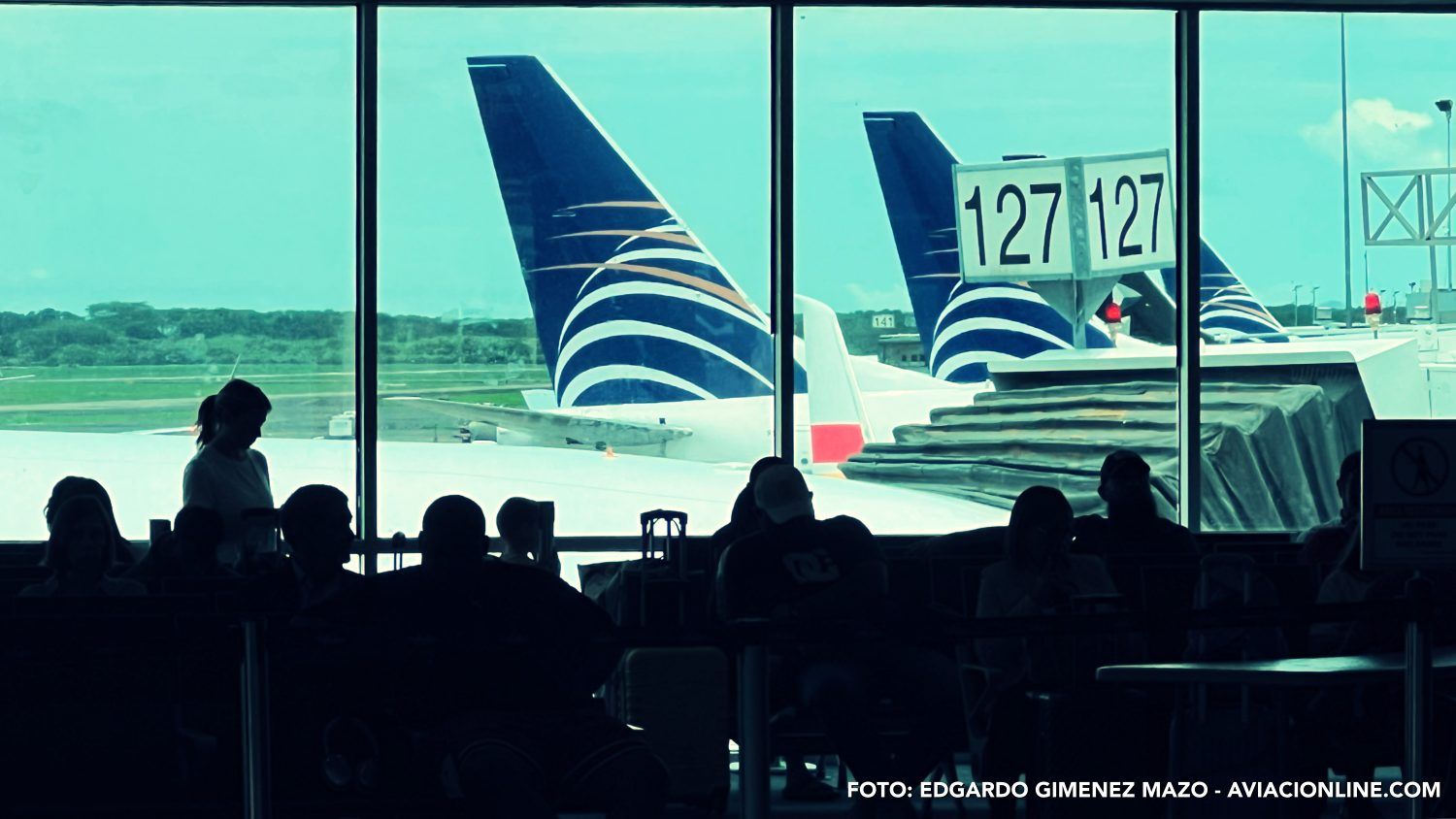IATA Reports 7.1% Growth in Global Passenger Demand for October 2024
The International Air Transport Association (IATA) reported a 7.1% increase in global passenger demand, measured in revenue passenger kilometers (RPK), during October 2024 compared to the same month last year. Global capacity, measured in available seat kilometers (ASK), grew by 6.1%, while the load factor stood at 83.9%, an increase of 0.8 percentage points over the previous year.

Asia-Pacific led the growth in international demand with a 17.5% increase. Capacity in the region rose by 17.2%, and the load factor reached 82.9%, up by 0.3 percentage points.
In Europe, demand grew by 8.7%, while capacity increased by 7.3%. The load factor in this region was 85.7%, the highest globally, with an increase of 1.1 percentage points compared to last year.
Africa showed a notable increase in demand, with a 10.4% rise, accompanied by a 5.3% increase in capacity. This led to a load factor of 73.2%, improving by 3.4 percentage points compared to October 2023.
In Latin America, demand grew by 10.9%, while capacity increased by 11.6%. However, the load factor slightly dropped by 0.6 percentage points, standing at 85.3%.
In the Middle East, international demand rose by 2.2%, and capacity grew by 2.5%, with a load factor of 80.2%, showing a slight decrease of 0.2 percentage points.
North America recorded a 3.2% growth in demand and a 2.9% increase in capacity. The load factor was 84.2%, with an increase of 0.3 percentage points.

Domestic Markets
In domestic markets, growth varied significantly by region. China led with a 9.7% increase in demand and a 2.2% growth in capacity, achieving a 5.9 percentage point increase in the load factor, reaching 86.2%.
In Brazil, domestic demand rose by 9.5%, while capacity increased by 7.8%, achieving a load factor of 83.7%.
In contrast, the United States recorded a 1.2% drop in demand, although capacity grew by 0.8%. The load factor decreased by 1.7 percentage points, standing at 82.5%.
Other markets such as India, Australia, and Japan also reported modest growth in demand and capacity, with load factors above 81%.
«Sustained and stable demand is good news, but equally important is the constant improvement in load factors. This demonstrates the great work the industry is doing to transport people more efficiently,» said Willie Walsh, Director General of IATA.
And, considering the «anti-aviation» climate emerging from certain sectors, particularly in Europe, Walsh added, «Average load factors have increased from around 67% in the 1990s to over 83% today. Politicians considering taxing passengers to reduce emissions would do well to keep this in mind.»
«Even if fewer people fly because taxes make it too expensive, that doesn’t automatically mean a reduction in emissions, as planes will still fly, but with fewer passengers. This would reverse decades of hard-earned progress. We need planes to be full to generate the economic and social benefits of transport with the minimal emissions possible,» Walsh concluded.
Download document: Air Passenger Market Analysis – October 2024


Para comentar, debés estar registradoPor favor, iniciá sesión